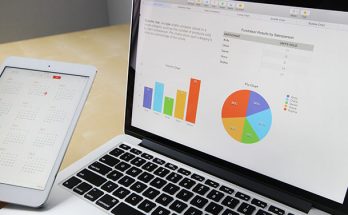Table of Contents
Business metrics, also known as KPIs, are ways to track, measure and monitor the success rates of key areas of your business such as sales, finance, HR and IT. They can provide insights into your business and help you to make key decisions about its future direction.
Selecting the right metrics is knowing which ones provide the most value for your business and this guide looks at key metrics that every manager should have on their radar.
How to develop a Business Metric
Steps you can follow when developing a business metric can include the following:
- Identify a goal. The first step is to identify the goal you want to achieve. It needs to be specific, relevant, measurable, and achievable in a realistic timeframe.
- Set benchmarks. A benchmark is a point of reference against which you can compare your level of success, (i.e. a competitor's success rate in a common area).
- Create a strategy. Develop a plan for achieving your goal and how you will measure your success. You will need to consider measurement frequency and recording and analysis methods.
Common Key Business Metrics
Business areas in which metrics are often employed include sales/marketing, human resources, IT and finance.
Sales/marketing
Sales metrics measure sales performance over a designated time period. They can help to measure the success of various sales schemes and highlight areas needing improvement.
Types of sales metrics include:
- Lead response time. This measures your sales team’s average response time to leads.
- Win rate. The percentage of sales achieved by your sales team
- Annual growth rate. This compares growth rates with previous years to determine whether and how much business has improved.
- Sales size. This determines the size of the sales and the amount of profit from each sale.
- Sales cycle. This measures the average time the sale takes from inception to closure.
- Customer Acquisition Cost (CAC). Measures the cost to acquire a customer and whether a change in your approach is required.
- Social media influence. This measures the number of social media followers you have on all platforms and the degree in to which they engage with your business.
- Website traffic. This measures the number of people that visit your website.
- Email open rate. This determines the number of people on your email list who open your emails.
Finance Metrics
Metrics that can be used to measure financial performance can include the following:
- Profit margin. This measures the amount of profit remaining after all expenses have been accounted for.
- Cash flow. This determines the difference between cash inflow (i.e. revenue, investment, and goods returned) and outflow (expenses such as wages, maintenance, and all other costs of running a business).
- Current ratio. This measures the creditworthiness of a business and whether it can pay back its loans.
- Quick ration (QR). This determines the number of liquid assets the business can draw on if required.
- Gross profit. This determines the amount of gain prior to taxation.
- Net profit. This determines the profits remaining after all incurred costs have been met.
Human Resources (HR) Metrics
There are a number of areas of human resources where metrics can play a role in developing sound policies and procedures. These can include the following:
- Absenteeism rate. This measures the number of unplanned days off taken by your employees.
- Employee turnover ratio. This determines the rate that employees voluntarily leave your business.
- Employee engagement rate. This measures your employees' satisfaction within their roles which can be determined through employee surveys.
- Average time to hire. This measures the length of the hiring cycle from screening to hiring.
- Cost of employees. This measures the total cost of an employee including salary, benefits, and training.
IT Metrics
IT metrics can be used by an IT department to measure their performance and point to areas needing improvement. They can include the following:
- Service availability. This measures the actual vs promised rate of service.
- Mean time to resolve. This measures the time it takes to resolve an issue.
- Mean time between failure. This measures the time between failures.
- Mean time to failure. This measures the uptime after the issue has been resolved.
Conclusion
Once these metrics are in place, each area of your business can then assess its performance and find solutions to improve. For example, if the customer acquisition cost is too high in the sales department, a solution could be to focus more on retaining existing customers. Similarly, in the IT department, if performance levels are less than satisfactory, a solution could be to upgrade the system to FTTP for a faster connection.
The metrics you choose to apply in your business will depend on the industry you are in and your particular needs. You should only choose those that are important to your business and bear in mind that these will change over time as you grow.



